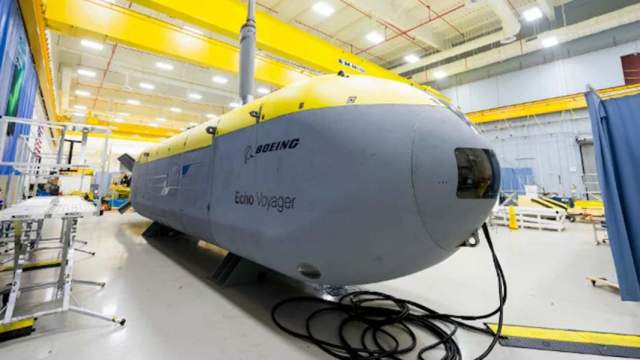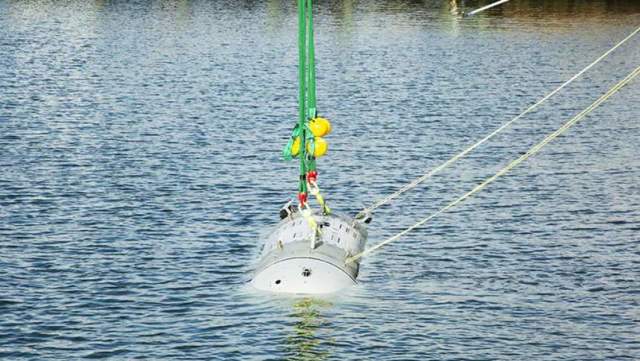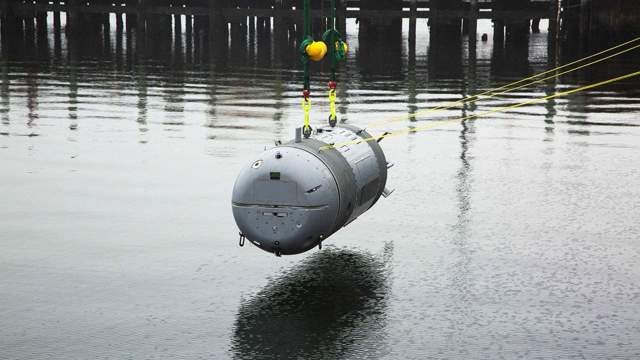Izvestia assessed the level of development of underwater drone construction in the WestThe reason for the explosions that stopped both "Nord Streams" for an indefinite period is not clear, nor is it clear which state is behind it.
In the light of the still completely unclear situation with obvious damage to gas pipelines, it is interesting to assess the underwater unmanned potential of foreign countries. Izvestia dealt with the technical means by which certain operations could be carried out in the seas washing Europe, and what is the level of development of underwater drone engineering in the West.
"Orca"
On April 28, 2022, the first of four prototypes of the largest American underwater drone Orca XLUUV was launched in California. Many media outlets called this device a kind of asymmetric response to the creation of the Poseidon nuclear underwater drone in Russia. In fact, XLUUV is a non—nuclear unmanned submarine weighing about 50 tons, which will become a platform for placing various payloads in order to test the use of such drones. In theory — and depending on the removable modular equipment — the American "Orcs" will carry out transport and mine-fighting missions, engage in reconnaissance, search operations at the bottom of the sea, conduct electronic warfare, detect underwater vehicles of a potential enemy and monitor their activities. In the future, such a device will also be armed with torpedo weapons — Mk46 and Mk48 homing torpedoes. The range of the Orca can reach 6,500 miles (almost 12 thousand km), and, taking into account the fact that its control system will combine an autonomous control system and work under the control of the command center, such a range allows you to perform tasks in any area of the World Ocean.

Orca XLUUV
Image Source: Photo: Boeing
It should be noted that the current killer whale (Orca) is only a prototype of future combat submarines-drones. It is planned to test technologies and methods of use on them. Of course, if necessary, the American shipbuilding industry will be able to build dozens of such relatively small devices. Probably, with the help of such underwater drones, it is planned to work out the search and destruction of Poseidon-type thermonuclear delayed-action mines that can be deployed by Russia.
The Crimean apparatus
On September 21, 2022, a marine drone of a previously unknown design was thrown on the coast of Crimea near Sevastopol. Some time later, another unmanned surface vehicle was discovered and destroyed near the base of the Black Sea Fleet of the Russian Navy. One of the devices ended up in the hands of the Russian military and, of course, will be thoroughly studied. Earlier there was information that the United States planned to transfer multi-purpose unobtrusive surface drones to Ukraine. Ukrainian operators were trained in the USA, and it is likely that we can talk about such devices here. Such drones can perform various tasks: reconnaissance, targeting, cargo delivery, kamikaze drones. Under certain conditions, they can be very effective, having a sufficiently long range and allowing you to act covertly — they have low radar and infrared visibility, which allows you to noticeably approach the necessary seaside objects. The length of such a drone is only about 4 m, the height above the water level is about 1 m. The device can have a mass of about 100 kg, but at the same time it can carry about 50-60 kg of explosives. Such a charge is more than enough to seriously damage even a large warship, not to mention unarmored civilian vessels and various port facilities.
British REMUS
On August 27, 2022, the British Ministry of Defense announced that it plans to supply Ukraine with underwater drones for demining the Black Sea. In particular, six light-class vehicles that can operate at relatively shallow depths up to 100 m. It is at this level that mines can be located that pose a danger to maritime navigation. The exact model of drones that Britain plans to supply to Ukraine has not been officially named, but a fairly well-known REMUS-100 drone, which has already been used for mine clearance, for example, in the Persian Gulf, falls under these characteristics. The number in the name just indicates the diving depth class in meters. Within a few weeks, specialists will be trained to manage the work of minesweeping drones. Their task is to detect and survey underwater objects. The minesweeper ship will destroy the detected mines with the help of trawls and depth charges. REMUS-100 is similar in design to a torpedo with a length of only 1.6 m with a hull diameter of less than 20 cm. Its weight is about 40 kg — a very small and easy-to-use device.
REMUS-100
Image Source: Photo: commons.wikimedia.org
Six vehicles is not a lot, and they will be enough only to clear and maintain in a safe condition only some limited water area — such as passage to the open sea from ports. In the fairways along which civilian vessels move, drifting mines may appear, which are torn from anchors from minefields near Odessa and, probably, from other mined areas of the Black Sea coast of Ukraine.
In addition to the REMUS-100, there are also larger REMUS-300 and REMUS-600 devices in England. They can operate at great depths and can carry large sets of equipment, but for the purposes of coastal trawling in the Black Sea, such devices are probably redundant.
"Snakehead" from the USA
Another large American—made drone is the Snakehead LDUUV (large displacement underwater vehicle). This is a secret novelty of the US Submarine Fleet. The non-atomic device was first presented to the public on February 16, 2022, and little is known about it yet. It is used from submarines that are equipped with a special container for moving underwater vehicles for transporting marine special forces — "seals". This suggests the purpose of the "Snakehead" — it is quite possible that the device can carry several combat swimmers or a fairly impressive set of equipment weighing several hundred kilograms.
And although the work on the formation of the appearance of the device took more than 10 years, the choice of the technical solution of the project was made by 2021 and the new drone was built literally within a year. Probably, such rates are explained by the fact that so far this is a single prototype, on which both constructive solutions and application tactics will be tested. It is possible to assume the mine-resistant use of such a device, conducting sabotage and reconnaissance missions. Judging by the dimensions, the "Snakehead" will be able to carry torpedo armament in the future.

Snakehead LDUUV
Image Source: Photo: DVIDS
In addition to the mentioned devices, dozens more models of military and civilian small and medium-sized underwater drones are in service and in operation in NATO countries. It should be understood that any university or a small high-tech company can create a fully functional small underwater vehicle for the seas surrounding Europe. Many devices have a commercial purpose and work on the maintenance of oil and gas pipelines. Small-sized underwater drones can be used, in general, from a small boat or vessel for research or hydrographic work. Today, underwater drones are a very common means of studying the oceans. And of course, they are used by the military.
Dmitry Kornev

